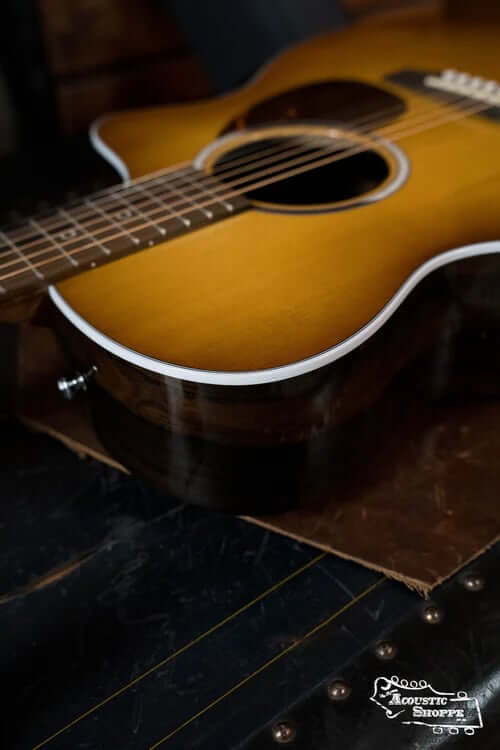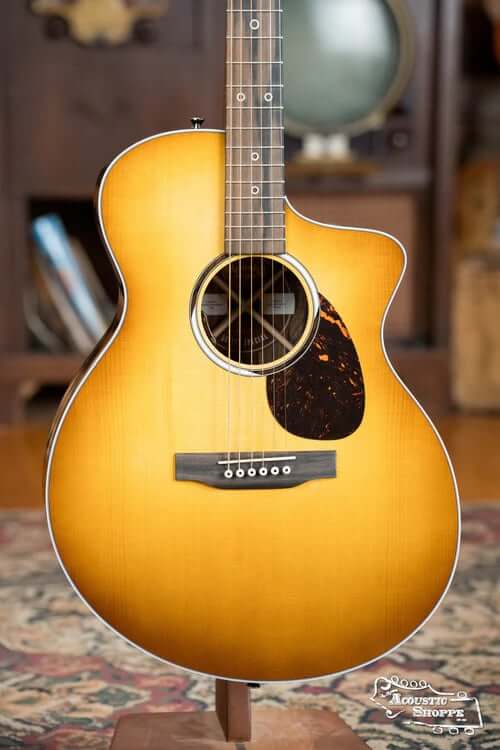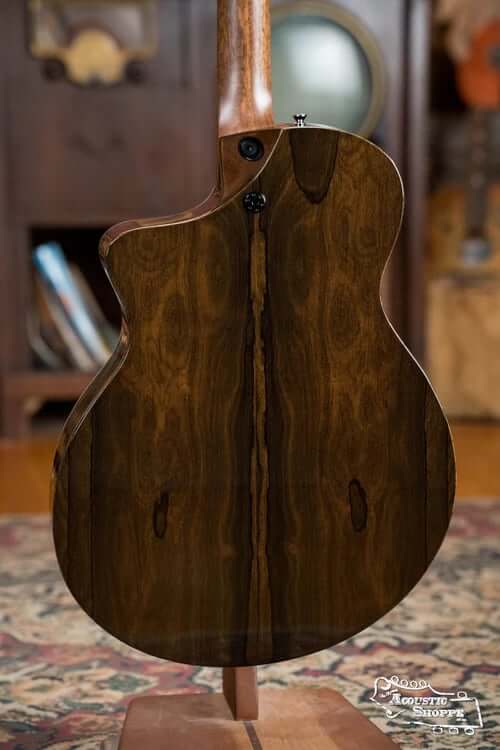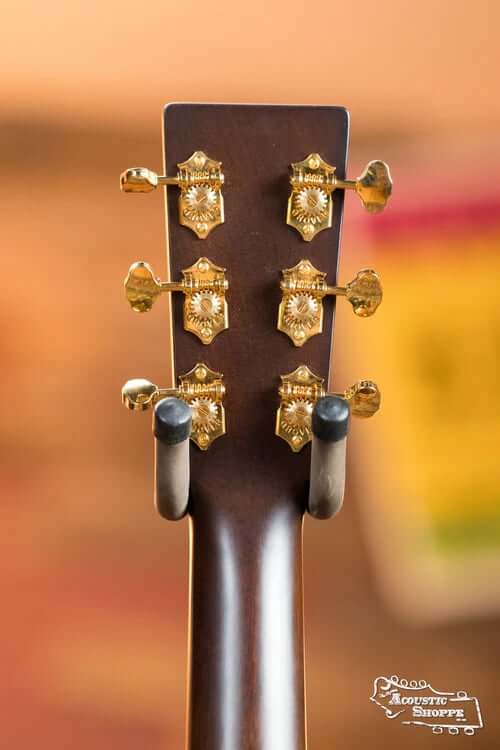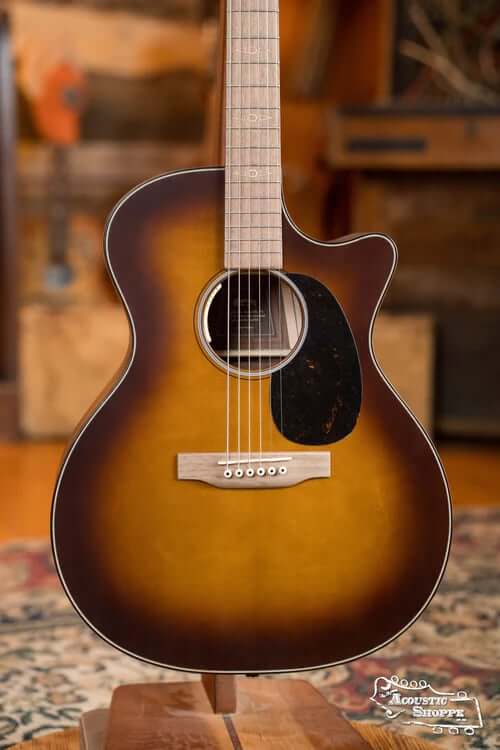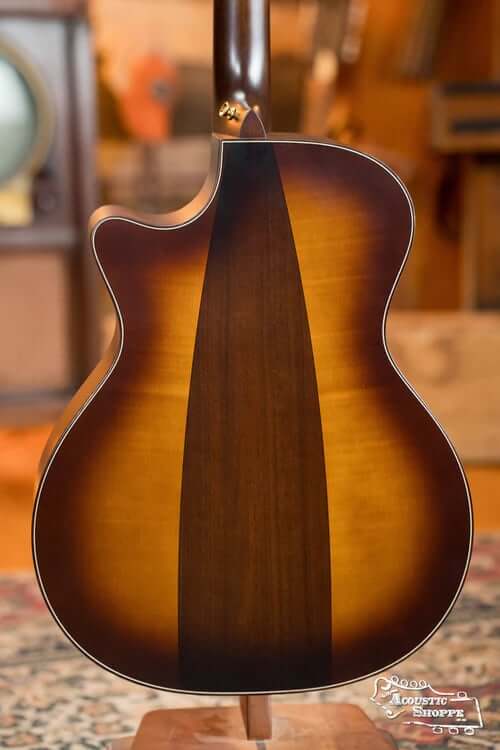Martin vs Taylor: Why Martin Struggles When They Innovate
In the ongoing debate of Martin vs Taylor, few topics stir the pot quite like innovation. On one hand, Taylor is widely praised for reinventing acoustic design—think bolt-on necks, V-Class bracing, and exotic wood combos. On the other hand, when Martin steps out of its historic blueprint and introduces new designs like the SC-13E or the GPCE Inception Maple, the reaction is far more divided. Some applaud the effort, but others say, "That's not what Martin is supposed to be."
This double standard raises a fair question: Why does Martin get criticism for trying new things, while Taylor gets a standing ovation for changing the game? In this blog, we’re diving deep into the Martin vs Taylor debate with a focus on innovation, perception, and the future of the acoustic guitar market. We'll also break down what makes the SC-13E and GPCE Inception so different—and why you might want to rethink your take on modern Martin guitars.
Martin's Legacy: Tradition is a Double-Edged Sword
To understand the divide in the Martin vs Taylor debate, you have to first understand Martin’s legacy. C.F. Martin & Co. has been building acoustic guitars since 1833. They invented the dreadnought. They defined what an acoustic guitar should sound like. And their designs have become the gold standard for bluegrass, folk, and singer-songwriter genres.
But that pedigree is also what limits them in the eyes of some players. Every time Martin introduces a new bracing pattern, neck joint, or wood pairing, critics jump in to say it strays too far from tradition. This is the "can't win for losing" dilemma. When Martin releases a vintage-style D-18, some say it's just another reissue. But when they debut something like the SC-13E with a radical neck joint and asymmetrical body, they’re told it’s “not a real Martin.”
In contrast, Taylor Guitars has always been framed as the innovator. Since the 1970s, Taylor built its brand by doing things differently—making guitars that play easier out of the box, are ultra-consistent, and appeal to modern players, especially electric guitar converts. In many ways, Taylor has been given permission by the market to evolve constantly.
Spotlight on Innovation: SC-13E vs GPCE Inception Maple
Let’s take a closer look at the two guitars that sparked this latest round in the Martin vs Taylor battle.
Martin SC-13E Special Burst
The SC-13E is Martin’s most forward-thinking design in decades. Its defining feature is the Sure Align neck system, a modern bolt-on neck joint that allows for unprecedented access up the neck—something traditionally difficult on acoustic guitars. It has an offset body shape, a low-profile heel, and a comfortable neck taper designed to feel like an electric guitar in your hands.
But that innovation comes with pushback. Some players argue the SC-13E doesn’t “look” like a Martin. Others worry that moving away from a dovetail neck joint and traditional tonewoods like rosewood and mahogany compromises tone. Yet, when you pick it up and play, especially plugged in through the LR Baggs electronics, it’s one of the most versatile stage guitars Martin has ever built.
point. Martin is trying to attract the modern player looking for something bold.
Martin GPCE Inception Maple
Then there’s the GPCE Inception, which takes things even further. This guitar features a torrefied Sitka spruce top, layered over a flamed maple back and sides with an entirely new Inception™ bracing system. The tone is incredibly balanced, with maple's natural brightness tempered by the aged top and innovative bracing.
It’s a high-performance guitar with a unique visual and sonic identity—yet many traditionalists have dismissed it simply because it doesn’t use the “classic” Martin tonewoods or bracing. But that’s the point. Martin is trying to attract the modern player looking for something bold.
Taylor's Open Door to Innovation
In the same Martin vs Taylor conversation, it’s worth noting that Taylor doesn’t receive nearly the same resistance. Their V-Class bracing was welcomed with applause. Their bolt-on neck design has been a staple since the beginning. And using woods like Urban Ash and layered koa hasn’t stopped them from being considered premium instruments.
Taylor actively embraces change—and their customers expect it. It’s part of the brand’s DNA. Martin, meanwhile, is often penalized for doing the same, even when the results are phenomenal instruments like the SC-13E and GPCE Inception.
Why is that? One reason might be audience segmentation. Martin has built decades of loyalty among bluegrass, Americana, and traditional acoustic players—an audience that values history and consistency. Taylor has drawn more attention from worship players, pop singer-songwriters, and younger audiences. These groups tend to value ergonomics, aesthetics, and playability just as much as tradition.
Do These Guitars Sound Like a Martin?
Let’s settle one more big question in the Martin vs Taylor debate: do these innovative guitars still sound like a Martin?
The answer is nuanced. The SC-13E doesn’t have the thundering low end of a D-28, but it delivers exceptional clarity, balance, and responsiveness—especially when plugged in. The GPCE Inception, while brighter than a rosewood dreadnought, still carries Martin's warmth, especially in the mids. Both offer something different—but that doesn’t mean they’re inferior.
Innovation doesn’t erase heritage. It expands it.
When Innovation Meets Expectation
So, should Martin stop innovating just because some players resist change? Absolutely not.
Innovation is how companies grow, stay relevant, and reach new players. The SC-13E and GPCE Inception are prime examples of how Martin can evolve while still honoring the craftsmanship that made them famous.
If anything, these guitars open the door to a new generation of Martin players—those who want modern features without sacrificing tone or quality.
Here's a quick takeaway for anyone comparing Martin vs Taylor:
Choose Martin if you love rich midrange, tradition, and heirloom-quality build, and you're open to innovation that doesn't sacrifice tone.
Choose Taylor if you're looking for sleek modern design, ultra-consistent playability, and an acoustic that feels a bit like an electric.
Conclusion: Let Martin Innovate—You Might Love It
The Martin vs Taylor debate will always stir strong opinions. But the truth is, there's room for both tradition and innovation in the world of acoustic guitars. Martin's SC-13E and GPCE Inception Maple prove that the company can look forward without forgetting where it came from.
Curious About More Martin Guitars?
We Played them all! Now you can listen to the gutiar that calls to you.
Pro Tip: Our exclusive Dread-Not Guarantee gives you a full year to fall in love with your guitar—or return it if it’s not the one. That way, you can test out your new Martin worry-free, knowing you’ve got time to make the right call.



